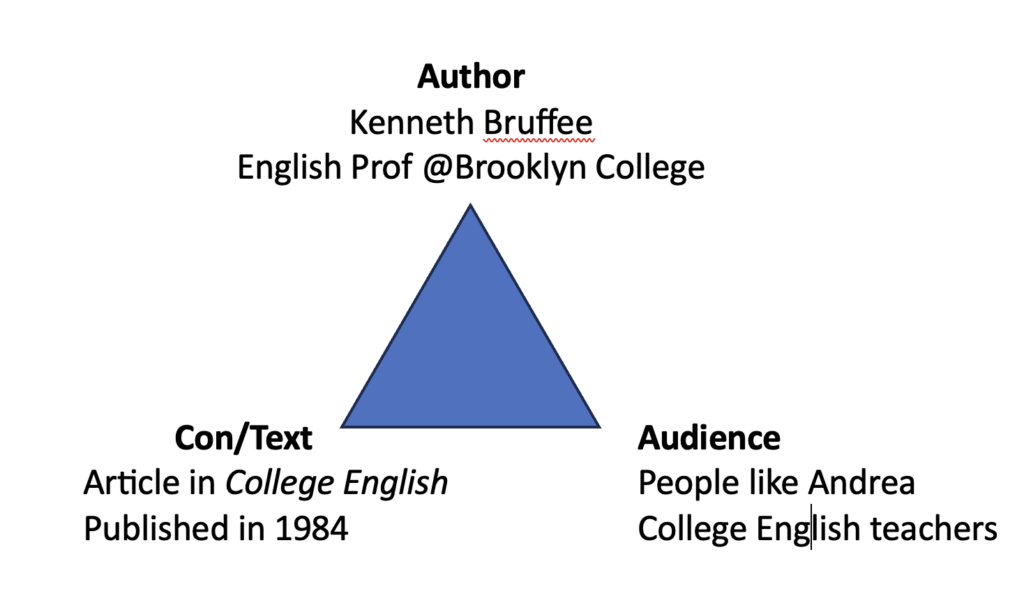10/8: Kenneth Bruffee Introduces Collaborative Learning to College English Teachers
RHETORICAL SITUATION
We’ll begin by orienting ourselves to Bruffee’s “Collaborative Learning and the ‘Conversation of Mankind’” (available on Brightspace) by understanding the rhetorical situation of this piece. We did this with Gee earlier in the semester; specifically, we will chart what we know about the author, audience, and text to take stock of the information we have going into this reading.

Group Work
In your groups, (quickly) answer the following questions. You should use textual evidence from Bruffee’s article, and I welcome you to use any relevant personal evidence, as well:
- Group 1 (pp. 638-641): According to Bruffee, what is the relationship between thought and community?
- Group 2 (pp. 641-644): According to Bruffee, what is the relationship between thought, conversation, and writing?
- Group 3 (pp. 645-647): How does Bruffee describe Thomas Kuhn’s understanding of scientific knowledge? What is the relationship between scientific knowledge & collaborative learning?
- Group 4 (pp. 647-649): Define “abnormal discourse.”
- Group 5 (pp. 649-652): According to Bruffee, how does collaborative learning for college students affect their authority in a college classroom or their community of peers?
Within your groups, you will need to assign the following roles: scribe, presenter, and observer. After you’ve developed an answer to your question, we’ll come back to share with the larger group.
HOMEWORK
REVIEW Bruffee’s article “Collaborative Learning and the ‘Conversation of Mankind’” (available on Brightspace). Come to Thursday’s class with any questions or reflections on Bruffee’s text. I will ask you to writing in-class next time about your own experiences with collaborative learning.

